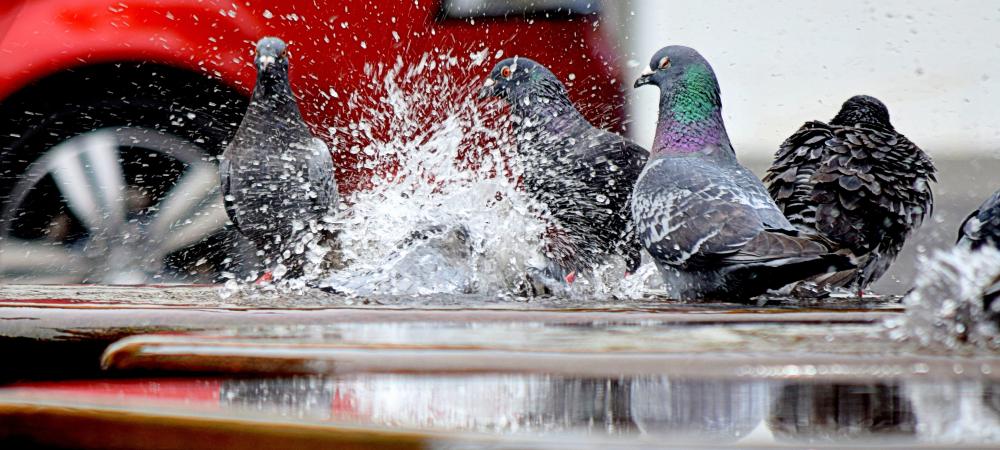How to Keep Birds Out of Roof Vents, Soffits, and Gutters

When birds turn your roofline into their nesting ground, they bring more than just noise—they can cause serious damage to your home and even pose health risks. Understanding why they’re drawn to vents, soffits, and gutters is the first step toward keeping them out for good.
Why Birds Target Roof Vents, Soffits, and Gutters
Why These Spots Offer Prime Nesting Real Estate
Your roofline offers a combination of warmth, shelter, and seclusion, which is everything a bird looks for in a nesting spot. HVAC or dryer vents produce heat, creating a cozy environment inside ducts. Soffits and gutters provide overhead protection from predators and the elements, while their elevation makes them hard for humans (and most animals) to reach. And because these areas are often left unsealed or poorly screened, they become easy entry points for determined birds.
Signs a Bird Is Nesting in Your Roofline
Visual and Audio Clues to Look For
Early detection is key. Here are a few signs to watch and listen for:
- Chirping, fluttering, or scratching noises in the early morning or around dusk.
- Twigs, feathers, or droppings accumulating under your eaves or near attic access points.
- Dark streaks or stains on siding near soffit or attic vents.
- Blocked or overflowing gutters filled with debris not typical of normal leaf buildup.
Structural & Health Risks from Nesting Birds
Beyond the noise, birds can cause lasting damage to your home:
- Fire Hazards: Blocked dryer or exhaust vents can overheat and become fire risks.
- Moisture Issues: Nests can trap moisture in gutters, leading to rot, mold, and fascia damage.
- Health Concerns: Droppings may contain harmful pathogens like histoplasmosis.
- Pests: Bird nests often harbor mites, ticks, and can even attract cockroaches.
Best Ways to Prevent Bird Entry
Installing Vent Covers and Screens
One of the most effective solutions is covering vulnerable vents with durable materials. Stainless steel or aluminum covers offer strength and long-term protection unlike plastic, which birds can easily peck through or dislodge.
Tips for effective vent protection:
- Use metal covers (stainless steel or aluminum) for durability.
- Make sure the mesh allows airflow but blocks twigs, feathers, and nesting debris.
- Avoid plastic or lightweight options—birds can damage or remove them.
- Hire a professional to ensure vents are properly sealed without restricting function.
Gutter Guards and Slope Adjustments
Birds often take advantage of clogged or poorly pitched gutters to build nests. Installing the right guards and maintaining gutter angles can help stop them.
Best practices for bird-proofing gutters:
- Use micro-mesh gutter guards to block debris and nesting access.
- Avoid foam fillers—they can break down, retain moisture, and even attract birds.
- Adjust gutter slope to prevent water pooling and discourage nesting.
- Add bird spikes to the outer edge of gutters to deter roosting and perching.
Soffit Repairs and Entry Sealing Techniques
Birds exploit the smallest weaknesses around soffits, especially gaps, cracks, or rotting wood.
How to protect your soffits:
- Repair or replace damaged soffits or fascia boards.
- Seal entry points using hardware cloth or metal vent guards.
- For active nests, use one-way exclusion doors to humanely evict birds.
- Perform repairs before nesting season (early spring) to avoid disturbing protected species.
Why DIY Bird Control Often Fails
Risk of Trapping or Harming Protected Species
Many homeowners don’t realize that it’s illegal to remove or disturb active bird nests for most native species, including swallows.
Common DIY mistakes:
- Installing exclusion materials during nesting season.
- Using traps that unintentionally capture live birds or fledglings.
- Violating the Migratory Bird Treaty Act, which can lead to fines or legal issues.
When in doubt, it’s best to call in a professional with wildlife experience.
Incomplete Solutions Lead to Return Infestations
Birds are creatures of habit. Once they’ve nested successfully, they’ll keep coming back unless properly excluded.
Why short-term fixes don’t work:
- Birds can peck through or bypass cheap materials like foam or chicken wire.
- Improper sealing leaves behind moisture risks and secondary pest issues.
- Without thorough exclusion, yearly infestations are almost guaranteed.
Professional Bird Exclusion Services
Sometimes the smartest (and safest) solution is calling in a professional, saving you time, stress, and the risk of costly legal issues. At Clancy Bros, we take a holistic approach to bird control, ensuring the problem is handled safely and effectively. We inspect every inch of your roofline, soffits, vents, chimneys, and other entry points. Then, we customize exclusion materials that blend with your home’s exterior. No bulky eyesores, just long-term protection. We also provide thorough nest cleanouts and sanitization services to remove debris, droppings, and contaminants, restoring your home to a safe, clean condition.
Our removal methods are always humane and legally compliant. We follow both state and federal wildlife regulations to protect birds and keep you in the clear. If birds are turning your property into their nesting ground, trust Clancy Bros bird control services to remove them safely and make sure they don’t come back.
